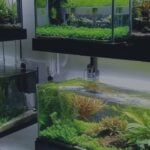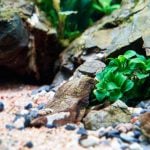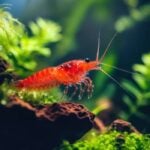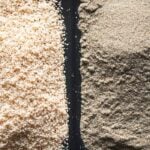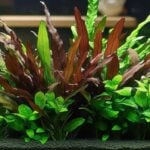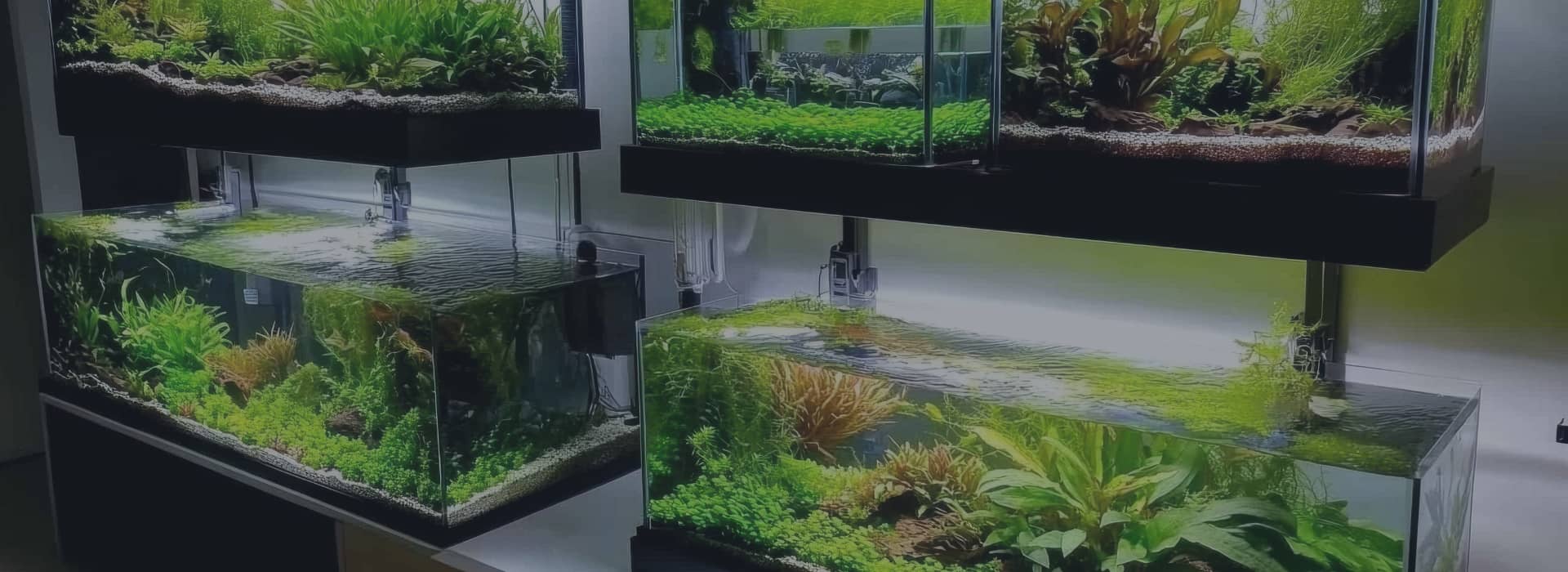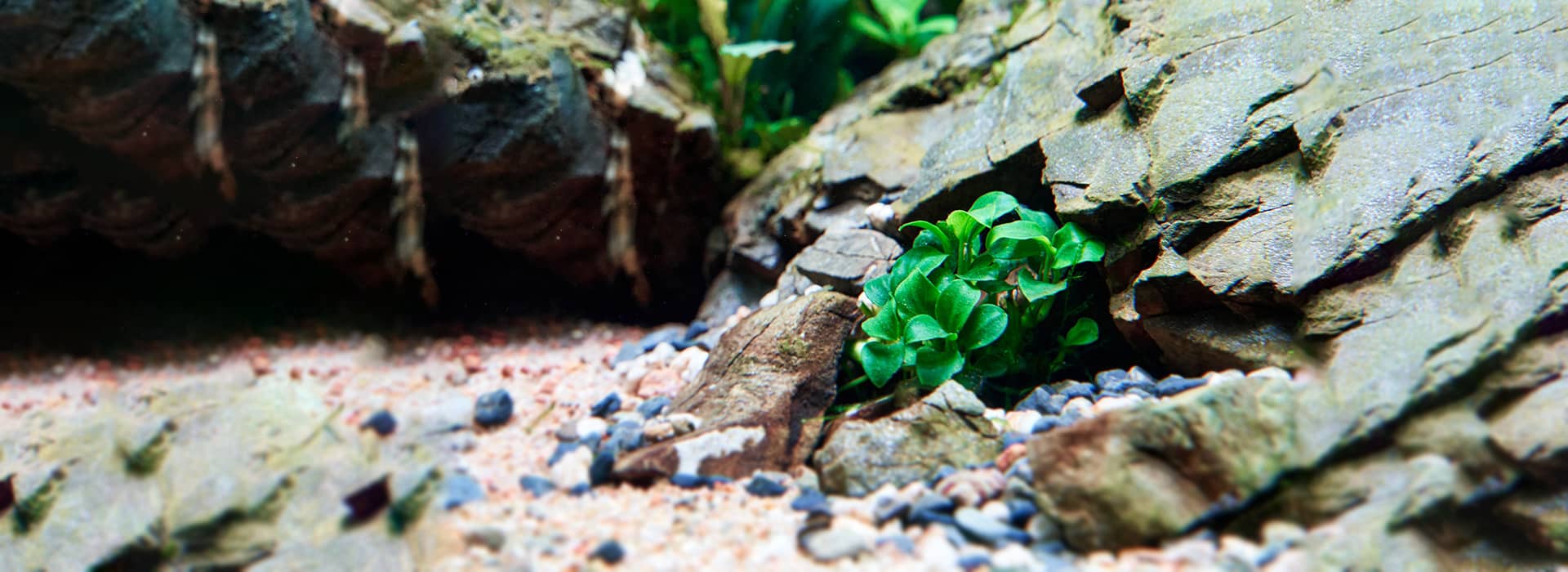Aquascaping is often described as an art form that involves creating an underwater landscape in an aquarium that not only looks good but also functions as a fully-fledged ecosystem. To do this, you need to carefully select the right plants, rocks, wood, and other décor elements and then place them in the aquarium in a way that looks captivating.
Aquascaping is a popular hobby among aquarium enthusiasts because it may be challenging but it is also one of the most rewarding sides of being an aquarium hobbyist.
It takes some skill, time, and effort to create a beautiful and harmonious underwater landscape. Today, I will guide you on how to properly aquascape a planted tank. It primarily consists of the following steps.
- Planning
- Setting the tank up
- Choosing the right plants
- Setting up all the necessary equipment and tools
- Adding the hardscape elements
- Adding the plants
- Adding fish and/or invertebrates
- Maintaining the Aquascape
Let us explore each of these steps in greater detail
Planning
Deciding to set up an aquascape is one of the most exciting things you can do. It can be quite tempting to jump in headfirst into the unknown hoping to figure things along the way. However, this can lead to mistakes that can be difficult to fix. Be a little patient and approach the entire process in a methodical manner. It will be a lot more satisfying in the long run. Here is how I like to plan out my aquascapes.
Decide on the Aquarium Size and Shape
The first step in planning an aquascape aquarium is to decide on the size and shape of the tank. The size and shape of the aquarium will determine the types of plants and fish that can be kept in it, as well as the layout of the aquascape. The most common aquarium shapes are rectangular and cube-shaped, but there are other shapes available, such as bow-front and hexagonal. The size of the aquarium will also depend on the space available in your home, as well as your budget.
Choose the Aquatic Plants
The aquatic plants are the backbone of an aquascape aquarium. There are various types of aquatic plants available, including foreground, midground, and background plants. Foreground plants are small and usually placed at the front of the aquarium, while background plants are taller and placed at the back. Midground plants are placed in the middle of the aquarium and act as a transition between the foreground and background plants.
We will take a more detailed look at this later.
Choose the Hardscape
The hardscape is the non-living part of the aquascape aquarium, such as rocks, driftwood, and substrate. The hardscape plays a crucial role in the overall design of the aquascape, as it provides structure and support for the plants and hiding spots for the fish. When selecting the hardscape, choose materials that are safe for the aquarium and do not leach harmful chemicals into the water.
Rocks and driftwood are popular hardscape materials, as they can be arranged in various ways to create caves, ledges, and other structures. The substrate at the bottom, such as sand or gravel, is an extension of the other hardscape elements and provides a base for the plants and also helps to maintain water chemistry.
Choose the Lighting and Filtration
Lighting and filtration are essential components of an aquascape aquarium. Lighting provides the energy needed for photosynthesis in the plants. It also makes the entire aquascape look visually appealing. Filtration helps to maintain water quality by removing waste and harmful chemicals. The filter for an aquascape should ideally have a controllable flow rate and high efficiency. For smaller tanks (30 gallons or less) I prefer hang-on-the-back or HOB filters. For larger tanks, a high-quality canister filter yields the best results.
As far as lighting is concerned, LED lighting is pretty much the only sensible choice these days for aquascape aquariums. These lights provide a wide spectrum of light while being easy to install, readily available, energy-efficient, and customizable.
Choose the Fish
Fish are the final component of an aquascape aquarium. Choose species that are compatible with the plants and. Small, peaceful, docile fish are a great place to start at. Fish species that are aggressive towards other fish or ones that may eat the plants should be avoided.
Setting The Tank Up
A tank that is fully setup with substrate, water, fish, plants, and décor is very heavy. Careful consideration should be made of where you set your tank up. Once everything is in place, it will be very difficult to move the tank again. This is especially true of planted tanks as any relocation will involve draining the tank. This will almost certainly destroy the aquascape and you will be forced to start over again from scratch.
Choose a place that can bear the weight of the aquarium after it has been filled up. This spot shouldn’t get any direct sunlight either as that can lead to algae blooms.
To get a rough estimate of how much your aquascaped tank would weigh, here is a rough estimate of some of the standard sizes aquariums come in.
| Tank Size | Approximate Weight |
| 10 gallon | 110 lbs |
| 20 gallon | 225 lbs |
| 30 gallon | 350 lbs |
| 40 gallon | 460 lbs |
| 50 gallon | 600 lbs |
| 60 gallon | 650 lbs |
| 75 gallon | 850 lbs |
| 90 gallon | 1050 lbs |
| 125 gallon | 1400 lbs |
| 150 gallon | 1800 lbs |
Keep in mind that these are very rough estimates, and the floor should be strong enough to bear at least 1.5 times the approximate weights mentioned here to be on the safe side.
Choosing the right plants
Choosing the right plants is an important aspect of creating a beautiful and thriving aquascape aquarium. Aquatic plants provide a natural and aesthetic look to the aquarium, while also playing a crucial role in maintaining the water quality and providing a healthy environment for the fish. In this essay, we will discuss the factors to consider when choosing the right plants for an aquascape aquarium.
Research the Types of Aquatic Plants
The first step in choosing the right plants for an aquascape aquarium is to research the types of aquatic plants available. There are various types of aquatic plants, including mosses, ferns, stem plants, and carpet plants. Each type of plant has different requirements, such as light and nutrient requirements, growth rate, and propagation methods.
Stem plants, for example, are tall and fast-growing plants that require high levels of light and nutrients, while mosses and ferns are low-maintenance plants that can thrive in low light conditions. Carpet plants are small and spread across the substrate to create a lush green carpet effect. Plants are also divided based on where they can be planted.
Foreground Plants: These are small plants that are used to create a carpet-like effect in the foreground of the aquarium. Examples of foreground plants include dwarf hairgrass, java moss, and pygmy chain sword.
Midground Plants: These are medium-sized plants that are used to create depth and texture in the middle of the aquarium. Examples of midground plants include anubias, crypts, and java fern.
Background Plants: These are tall plants that are used to create a backdrop for the aquarium. Examples of background plants include Amazon swords, water wisteria, and hornwort.
Floating Plants: As the name suggests, these are the plants that float on the surface of the aquarium. They are used to provide shade and cover for fish and to reduce algae growth. Examples of floating plants include duckweed, water lettuce, and frogbit. Most of them tend to grow very quickly and this can block the light from reaching the plants under the water. So, be ready to regularly clear them on a regular basis.
Consider the Aquarium Size and Shape
The size and shape of the aquarium will also play a role in determining the type of plants that can be used. Tall stem plants, for example, may not be suitable for a shallow aquarium, while carpet plants may not be suitable for a tall aquarium as getting the lighting right can be tricky.
Determine the Lighting and Nutrient Requirements
Different aquatic plants require different amounts of light and nutrients to grow and thrive. High-light plants require intense lighting, while low-light plants can survive in low light conditions.
Accordingly, match the lighting requirements of the plants with the aquarium’s lighting system. LED lighting is a popular choice for aquascape aquariums, as they are quite versatile and cost-effective.
In addition to lighting, aquatic plants require nutrients to grow. These nutrients can come from fish waste, aquarium fertilizers, or other sources. Monitor the nutrient levels in the aquarium and adjust them as needed.
Take Into Account The Care Level Required By The Plants
Choosing plants based just on how they look is one of the most common mistakes aquascapers make. Always consider their care level first and choose plants that you will be able to take care of properly. Plants can be broadly classified into three groups based on the care level they require.
Easy Care Plants: These plants are ideal for beginners or those who have limited time to maintain their aquascape. They are often hardy and can thrive in a wide range of water conditions, making them easier to care for. Some examples of easy-care plants include Java Fern, Anubias, and Java Moss.
Moderate Care Plants: These plants require a bit more attention than easy care plants, but they are still relatively low maintenance. They may require more light or nutrient supplementation, but they can still be grown successfully by hobbyists with some experience. Examples of moderate care plants include Amazon Sword, Cryptocoryne, and Water Wisteria.
High Care Plants: These plants require a lot of attention and can be challenging to grow. They often have specific requirements for light, nutrients, and water quality, and may need regular pruning and fertilization. They are ideal for experienced aquascapers who have the time and dedication to care for them properly. Examples of high care plants include Dwarf Hairgrass, Red Ludwigia, and Rotala.
Consider your level of experience and the amount of time you can devote to maintenance to choose the right care level for you.
Consider the Fish
The plants should go well with the fish you intend to keep. Carpet plants, for example, can provide a hiding place for small fish, while tall stem plants can provide a backdrop for larger fish.
Choose Plants that Fit the Budget
Finally, choose plants that fit the budget. Some plants can be expensive, while others are more affordable. It is also highly possible that you may lose a few plants during the setup process. Take all of this into account before spending your money.
Setting Up All The Equipment And Tools
An aquascape aquarium requires several pieces of equipment to create a healthy environment. Here are some of the essential equipment needed.
Filter: The filter is an essential piece of equipment that helps to maintain the water quality in the aquarium. The filter removes excess fish waste, uneaten food, and other debris from the water, which can lead to harmful ammonia and nitrate levels. Most importantly, it houses beneficial bacteria which help keep the nitrogen cycle going. There are several types of filters available. Hang-on-back filters, canister filters, and internal filters are the ones that work best for an aquascaped tank.
Heater: A heater is necessary to maintain a consistent temperature in the aquarium. Most fish require a specific temperature range to thrive, and a heater can help to maintain that range. Keeping the fish happy will indirectly benefit the plants.
Lighting: Lighting is essential for the growth of aquatic plants. The amount and intensity of light required will depend on the type of plants in the aquarium. LED lights are a popular choice for aquascape aquariums as they provide a spectrum of light that is suitable for plant growth.
Substrate: The substrate is the material that lines the bottom of the aquarium. It provides a place for plants to root and can help to maintain a healthy environment for fish. There are several types of substrate available, including gravel, sand, and soil.
CO2 System: A CO2 system is only necessary for aquariums with demanding plants. Use such a system only if the plants need it.
Thermometer: A thermometer is essential to monitor the water temperature in the aquarium. It’s important to keep the temperature within the appropriate range for the fish and plants in the aquarium.
Water Test Kit: A water test kit is necessary to monitor the water quality in the aquarium. The kit measures the levels of ammonia, nitrate, nitrite, pH, and other parameters that can affect the health of the fish and plants.
Planting And Pruning Tools: A good set of planting and pruning tools such aquascaping scissors, tweezers, tongs, rakes, etc, will go a long way in making the entire process smooth.
Aquarium Cleaning Tools: Aquarium cleaning tools, such as a gravel vacuum, algae scraper, and net, are necessary to maintain the cleanliness of the aquarium. These tools help to remove debris and algae from the aquarium and keep the water quality at a healthy level.
Adding the hardscape elements
Hardscape elements such as rocks, driftwood, and other decorations can add a lot of visual interest and depth to an aquascaped tank. Here are the steps to add hardscape elements to an aquascaped tank:
- Plan the placement: Before adding hardscape elements, it’s important to plan the placement to ensure that it creates the desired effect. Consider the size, shape, and color of the hardscape elements, and how they will interact with the aquascape.
- Clean the hardscape elements: Rinse the hardscape elements thoroughly in water to remove any dirt, debris, or unwanted organisms that may harm the tank’s ecosystem.
- Add substrate: If the aquarium has not been filled with substrate, add it now.
- Place the hardscape elements: Carefully place the hardscape elements in the substrate, making sure that they are stable and will not topple over. Use rocks or other stable objects to hold the hardscape elements in place if necessary.
- Turn on the lights: Hardscape elements can cast shadows and affect the lighting in the aquarium, so adjust the lights accordingly.
- Monitor and maintain: Monitor them regularly for signs of stability and cleanliness. Remove any dead or decaying organic matter from the hardscape elements to prevent it from harming the tank’s ecosystem.
Adding The Plants
Now we come to the really fun part. Here are the steps to add plants to an aquascaped tank:
- Prepare the plants: Before adding plants to the aquarium, it’s important to prepare them. Remove any damaged or yellow leaves and rinse the plants thoroughly in water to remove any dirt or debris. Lay them out on a flat surface and spray them regularly to stop them from drying out.
- Create a planting plan: Plan the placement of the plants in the aquarium. Consider the size and shape of the plants, the lighting requirements, and the desired aesthetic. A good rule of thumb is to plant taller plants in the back of the aquarium and shorter plants in the front.
- Plant the plants: Carefully place the plants in the substrate, making sure that the roots are buried and the leaves are above the substrate. Use a pair of tweezers or planting tool to plant the plants to prevent damaging the roots. For plants with rhizomes, makes sure the rhizome isn’t buried completely in the substrate.
- Add water: Fill the aquarium with water slowly, taking care not to disturb the substrate or plants. If using tap water, treat it with a water conditioner to remove any harmful chemicals. Some play may get uprooted. Do not worry. Just plant them back in.
- Turn on the lights: Plants require light to grow, so turn on the lights and adjust them to the appropriate level for the types of plants you are adding.
- Monitor: After adding plants to the aquarium, monitor them regularly for signs of growth and health. Keep the water parameters stable, ensure adequate lighting and nutrient levels, and trim any dead or damaged leaves.
Adding Fish and/or Invertebrates
Adding fish and invertebrates to an aquascaped tank is another exciting step, but it’s important to do it carefully to ensure that the new additions are compatible with the existing ecosystem. Here is a guide on how to do that.
- Ensure the tank is cycled: Just because the plants are doing well doesn’t mean that the tank is ready for fish. Get the tank properly cycled before even thinking about getting the fish or invertebrates.
- Choose the right species: Before adding any new fish or invertebrates to your aquascaped tank, research the species to ensure that they are compatible with the existing ecosystem. Consider factors such as water temperature, pH level, water hardness, and dietary requirements.
- Acclimate the new arrivals: When you bring home new fish or invertebrates, it is important to acclimate them to the tank slowly. This helps to prevent stress and illness. Float the bag containing the new arrivals in the tank for at least 15 minutes, and gradually add small amounts of water from the tank to the bag every 5-10 minutes until the water in the bag is equal to the temperature and pH level of the tank. Then, carefully release the new arrivals into the tank.
- Monitor behavior: After adding new fish or invertebrates to the tank, monitor their behavior closely. Observe them for signs of stress, aggression, or illness. It is normal for new arrivals to be timid at first, but if they are consistently hiding or not eating, there may be a problem.
- Maintain water parameters: Maintain stable water parameters in the tank to ensure the health of the fish and invertebrates. Test the water regularly for levels of ammonia, nitrite, and nitrate, and make adjustments as necessary.
- Feed appropriately: Different species of fish and invertebrates have different dietary requirements, so feed them appropriately. Offer a variety of foods, such as flakes, pellets, frozen or live foods, to ensure that they are getting the nutrients they need.
- Quarantine new arrivals: It’s a good idea to quarantine new arrivals in a separate tank for a period of time before adding them to the main tank. This can help to prevent the spread of illness or parasites to the existing ecosystem.
Maintaining the Aquascape
Finally getting everything setup is a huge accomplishment but only the first step. Keeping it alive and thriving is where all the long term fun and enjoyment lies. Maintaining an aquascape requires regular attention and care to keep the plants, fish, and other inhabitants healthy and thriving. Here are some tips for maintaining an aquascape:
- Monitor water parameters: Regularly test the water in the tank for levels of ammonia, nitrite, and nitrate, as well as pH and water hardness. Make adjustments as necessary to ensure that the water parameters are within the acceptable range for the species living in the tank.
- Perform regular water changes: Regular water changes help to maintain the water quality in the tank and remove any accumulated waste or debris. Aim to change 10-20% of the water in the tank every 1-2 weeks.
- Clean the filter: The filter in the tank plays an important role in maintaining water quality. Clean the filter regularly to remove any debris or excess waste that may have accumulated. Replace half the filter media once every six months.
- Prune plants: Regularly prune plants in the tank to keep them healthy and prevent overcrowding. Remove any dead or decaying plant matter to prevent it from affecting the water quality.
- Remove debris: Regularly remove any debris, such as uneaten food or dead plant matter, from the bottom of the tank to prevent it from affecting the water quality.
- Monitor for signs of trouble: Keep a close eye on the plants and inhabitants of the tank for signs of illness or disease. Address any issues promptly to prevent them from spreading to the rest of the ecosystem.
FAQ
What is aquascaping?
Aquascaping is the art of arranging aquatic plants, rocks, stones, and other decorative elements in a way that creates a visually appealing underwater landscape.
What are the benefits of having a planted tank?
Planted tanks provide a natural and aesthetically pleasing environment for fish and other aquatic creatures, and they help to promote a healthy and balanced ecosystem. The plants also help to oxygenate the water, remove harmful toxins, and provide shelter and hiding places for fish.
What equipment is needed to aquascape a planted tank?
The equipment needed to aquascape a planted tank includes a fish tank, substrate, lighting, filtration system, heater, CO2 system (optional), and fertilizers.
What types of plants are suitable for a planted tank?
There are many types of plants that are suitable for a planted tank, including Java fern, Anubias, Amazon sword, Ludwigia, and Cryptocoryne. Choose plants that are compatible with the water parameters and lighting conditions of the tank.
How do I choose the right substrate for my planted tank?
The substrate in a planted tank provides nutrients for the plants and supports their root system. Choose a substrate that is suitable for the types of plants you want to grow and that provides the appropriate level of nutrients.
How do I maintain the water quality in my planted tank?
Maintaining the water quality in a planted tank involves regular testing for levels of ammonia, nitrite, and nitrate, as well as pH and water hardness. Perform regular water changes, clean the filter, and remove any debris or decaying plant matter from the tank.
How often should I prune my plants?
Pruning frequency depends on the types of plants in the tank and how quickly they grow. Generally, it’s a good idea to prune plants once a week to prevent overcrowding and to promote healthy growth.
Can I add CO2 to my planted tank?
Yes, adding CO2 to a planted tank can help to promote healthy plant growth. However, it’s important to monitor CO2 levels closely to avoid overdosing, which can harm the fish and other inhabitants of the tank.
Conclusion
Aquascaping a planted tank is a rewarding and enjoyable hobby that requires creativity, patience, and a good understanding of aquatic plants and their needs. With the right tools and techniques, you can create a beautiful underwater landscape that not only looks stunning but also supports the health and growth of your plants and aquatic animals. Whether you’re a beginner or an experienced aquascaper, there are always new ideas and approaches to explore, making this hobby an endless source of inspiration and learning. By investing time and effort into aquascaping, you can create a stunning aquatic world that will be a joy to observe and care for.
